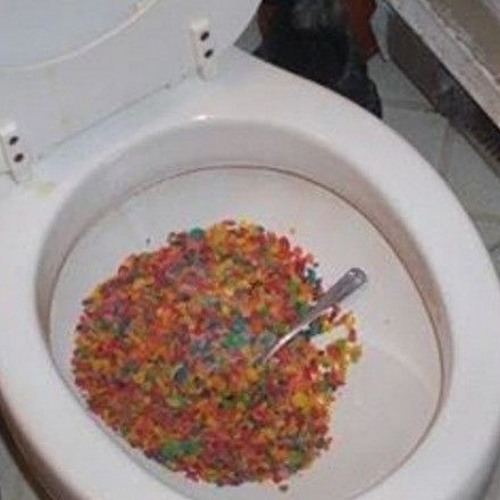Is it Prudent to Flush Food in the Toilet?
Is it Prudent to Flush Food in the Toilet?
Blog Article
Any individual seems to have their own individual perception in relation to Flushing Food Down the Toilet?.

Introduction
Many people are commonly faced with the dilemma of what to do with food waste, specifically when it pertains to leftovers or scraps. One usual inquiry that occurs is whether it's fine to purge food down the commode. In this post, we'll look into the reasons individuals could consider flushing food, the effects of doing so, and alternate techniques for correct disposal.
Reasons people could take into consideration flushing food
Lack of awareness
Some individuals may not be aware of the prospective damage brought on by purging food down the toilet. They may incorrectly think that it's a harmless method.
Convenience
Purging food down the bathroom may appear like a fast and very easy service to throwing away unwanted scraps, especially when there's no close-by trash can offered.
Idleness
In some cases, individuals might merely pick to flush food out of sheer laziness, without thinking about the effects of their actions.
Consequences of flushing food down the bathroom
Environmental impact
Food waste that winds up in waterways can contribute to contamination and damage marine communities. Additionally, the water made use of to flush food can stress water sources.
Pipes issues
Flushing food can bring about stopped up pipelines and drains, creating costly plumbing repair work and inconveniences.
Sorts of food that should not be flushed
Coarse foods
Foods with fibrous textures such as celery or corn husks can obtain tangled in pipes and cause clogs.
Starchy foods
Starchy foods like pasta and rice can soak up water and swell, resulting in obstructions in pipes.
Oils and fats
Greasy foods like bacon or cooking oils ought to never ever be flushed down the bathroom as they can strengthen and cause obstructions.
Correct disposal techniques for food waste
Using a waste disposal unit
For homes furnished with waste disposal unit, food scraps can be ground up and purged through the plumbing system. However, not all foods are suitable for disposal in this fashion.
Recycling
Certain food packaging materials can be recycled, reducing waste and lessening ecological influence.
Composting
Composting is an environment-friendly way to get rid of food waste. Organic materials can be composted and used to improve dirt for gardening.
The value of proper waste management
Decreasing ecological harm
Appropriate waste management methods, such as composting and recycling, aid decrease contamination and maintain natural resources for future generations.
Securing pipes systems
By avoiding the practice of flushing food down the toilet, homeowners can avoid expensive plumbing repair work and preserve the honesty of their plumbing systems.
Conclusion
In conclusion, while it might be appealing to flush food down the commode for comfort, it is essential to comprehend the potential consequences of this activity. By taking on proper waste management techniques and taking care of food waste sensibly, people can contribute to healthier plumbing systems and a cleaner setting for all.
FLUSH FOOD DOWN THE TOILET?
FLUSHING FOOD CAN CAUSE BLOCKED DRAINS IN YOUR HOME
All of the plumbing fixtures in your home are connected to the same sewer pipe outside of your home. This outdoor sewer pipe is responsible for transporting all the wastewater from your home to the Council sewer mains. Even small pieces of food that go down the kitchen sink can cause problems for your sewer. It should therefore be obvious that flushing larger bits of food, such as meat, risks a clog in either the toilet itself or the sewer pipes. Flushing greasy food is even more problematic because oil coagulates when it cools, coating the interior lining of your pipes.
THE TOILET IS NOT A BIN
Food isn’t the only thing that people shouldn’t be flushing down the toilet. People use the toilet to dispose of all kinds of things such as tampons, makeup wipes, dental floss, kitty litter and even underwear. Water goes to great lengths to educate residents about the high costs and stress placed on wastewater treatment systems simply from people flushing the wrong stuff down the toilet. It costs taxpayers millions of dollars each year, and homeowners thousands in blocked drain repairs.
FLUSHING FOOD IS A WASTE OF WATER
Flushing food is a waste of our most precious resource - water. In June this year Level 1 water restrictions were introduced to protect water supply from drought conditions. Much of New South Wales continues to be affected by prolonged drought with recent figures revealing up to 97 per cent of the state remains in drought. Depending on whether you have a single or dual flush toilet, every single flush uses between five and 11 litres of water. In the current climate this is a huge amount of water to be wasting on flushing food that should be placed in the bin (or better yet, the compost).
https://www.jabplumbingsolutions.com.au/blog/can-you-flush-food-down-the-toilet

As a fervent reader on What Can Happen If You Flush Food Down the Toilet?, I think sharing that piece of content was a good thing. If you enjoyed reading our blog entry plz don't forget to share it. Many thanks for going through it.
Schedule Appointment Now Report this page